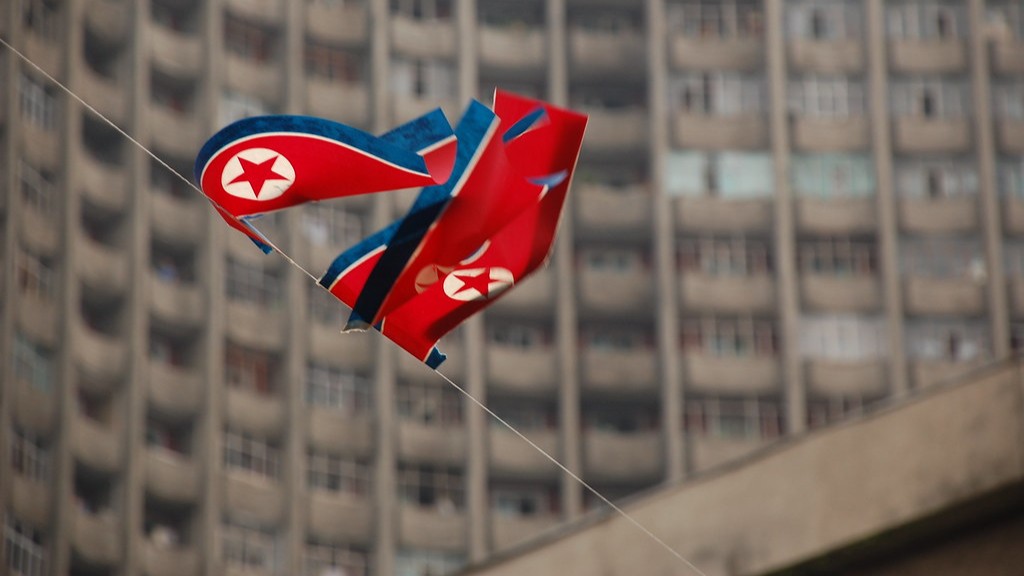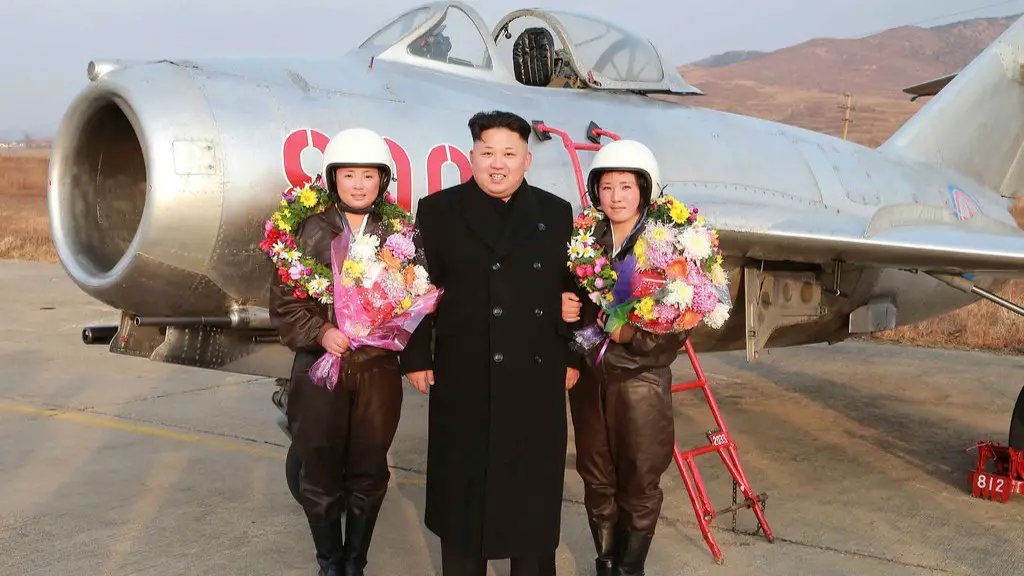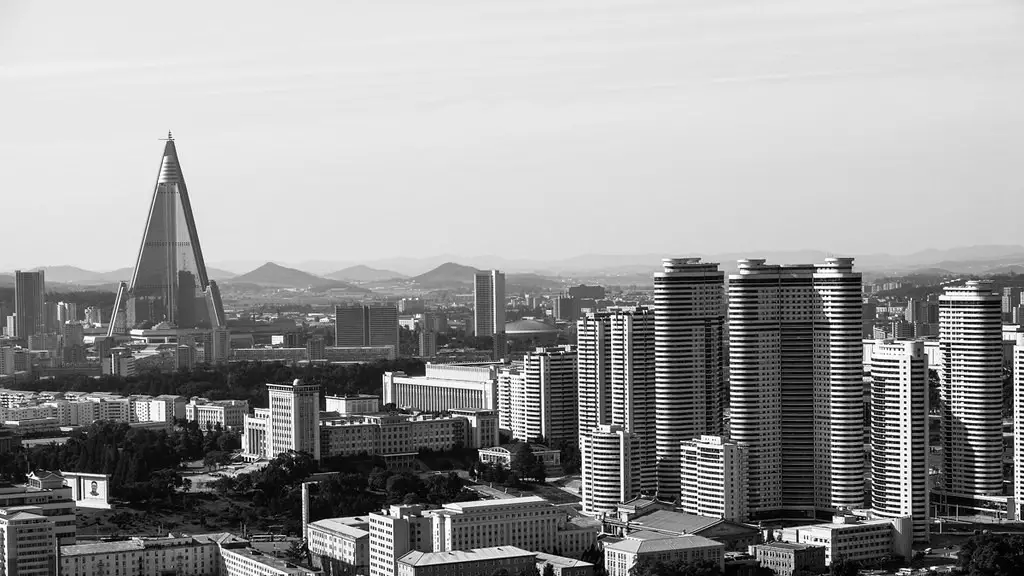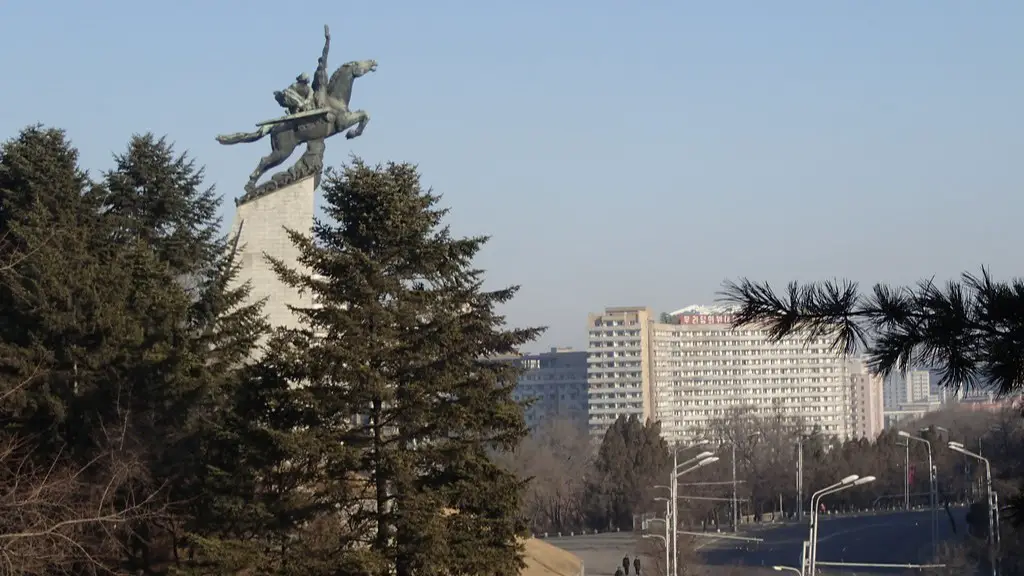Introduction
South Korea and North Korea have been divided since the end of World War II. Until then, they were part of a unified Korea ruled by the Japanese. But with the end of the war and the subsequent collapse of Japan as an empire, two rival governments were established in the Korean peninsula. Since then, the two countries have gone in different directions, becoming increasingly isolated from each other.
Division After WWII
Following the end of World War II, the United States and the Soviet Union divided the Korean peninsula into two occupation zones. In 1948, two separate governments were created in the North and South. The South was led by a democratic government, while the North was led by a communist government. This division ultimately led to the Korean War, which was a bloody conflict between the two sides.
The end of the war in 1953 saw the establishment of the demilitarized zone (DMZ) between North and South Korea. This line of separation effectively cemented the division of the Korean peninsula and both sides have since increased their defenses along it. In addition, South Korea and North Korea have developed vastly different economic and political systems, making reunification increasingly unlikely.
North Korea’s Isolation
After the establishment of two separate governments, North Korea has become increasingly isolated from the international community. The North Korean government is one of the most repressive in the world, with a long history of human rights abuses and a complete lack of basic civil liberties. The government has also sought to isolate itself from the outside world by strictly limiting travel and communication with other countries. This has created a crisis in North Korea, as the country has been unable to benefit from the economic development that has taken place around the world.
North Korea’s isolation has been further exacerbated by its nuclear weapons program. The North Korean government has actively sought to develop nuclear weapons for a number of years, leading to sanctions from the United States and the international community. As a result, North Korea is one of the most heavily sanctioned countries in the world, further isolating it from the rest of the world.
South Korea’s Development
In contrast to North Korea, South Korea has experienced tremendous economic and social development since the end of the Korean War. South Korea was one of the first countries in Asia to achieve rapid economic growth in the 1960s and 1970s, becoming a major economic power in the region. This impressive economic development led to a dramatic improvement in the standard of living in South Korea, with poverty and hunger becoming much less of an issue.
In addition, South Korea has become one of the most liberal and democratic countries in Asia. Since the end of military rule in the 1980s, South Korea has become a fully functioning democracy with a robust set of civil liberties and a commitment to human rights. As a result, South Korea has become a beacon of hope and development in Asia.
Ongoing Conflict
Despite the stark differences between North and South Korea, the two sides still have a deep-rooted conflict. The issues that drove the original split between the two sides remain unresolved. In addition, North Korea remains deeply suspicious of the South, which it sees as a puppet of the United States and a threat to its own security.
In recent years, there have been a number of diplomatic efforts to improve relations between the two sides. However, progress has been slow, and tensions remain high. Despite the occasional spikes in tension, however, there has not been a return to open hostilities between the two sides.
The International Response
The international community has responded with a mix of caution and support to the ongoing differences between North and South Korea. The United States has taken a hard line on the North, imposing economic sanctions and attempting to isolate it diplomatically. However, many other countries have taken a more moderate stance, providing limited diplomatic and economic support to both sides.
In addition, the United Nations has taken a prominent role in attempting to broker peace between North and South Korea. The UN has taken numerous initiatives to alleviate the tensions between the two sides, including the deployment of peacekeepers along the DMZ. In addition, the UN has sponsored numerous talks and negotiations between the two sides.
Relationship in the Present
Today, the relationship between South Korea and North Korea is still marked by tension and distrust. Relations between the two sides have improved somewhat since the end of the Cold War, but progress towards reunification has been slow. Furthermore, the North Korean government’s continued isolation from the international community has created an increasingly tense situation in the region.
Nevertheless, dialogue and diplomatic efforts continue between the two sides, and a number of people remain hopeful that the two sides can eventually find a way to bridge the divide. Even in the face of continued tensions, many people continue to dream of a unified Korea.
International Efforts
In recent years, the international community has made efforts to reduce tensions between North and South Korea. These efforts have included the implementation of economic sanctions against North Korea, as well as diplomatic initiatives between the two sides. In addition, the implementation of two free trade agreements between South Korea and its neighbors has led to increased economic integration in the region.
At the same time, the United Nations has taken an active role in attempting to reduce tensions in the region. The UN has sponsored several dialogues and negotiations between the two sides, as well as initiatives to promote human rights and the protection of the environment. In addition, the UN has deployed peacekeepers along the DMZ in order to monitor the region and provide a limited level of security.
Cultural Exchange
In addition to diplomatic efforts, there have been some positive cultural exchanges between North and South Korea in recent years. The two sides have adopted informal relationships with each other, allowing for limited travel between the two countries as well as the exchange of goods and services. In addition, South Korea’s popular culture, such as television and music, have become increasingly popular in North Korea, providing a measure of connection between the two sides.
In the long term, experts are hopeful that increased cultural exchange and dialogue between North and South Korea will lead to greater understanding between the two sides. This could ultimately lead to greater trust between the two sides and eventually even to reunification.
Conclusion
South Korea and North Korea have been divided since the end of World War II, and the divide between the two sides has only grown deeper in the intervening years. Nevertheless, despite the tensions that remain between the two sides, diplomatic efforts, economic initiatives, and cultural exchanges have provided some hope for the future. In the long term, it is possible that these efforts will lead to greater understanding and trust between North and South Korea and eventually even lead to reunification.




